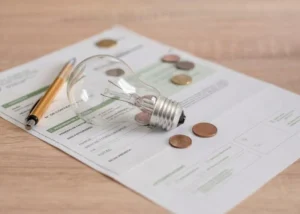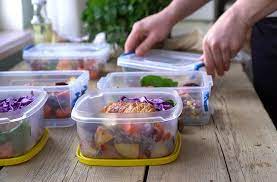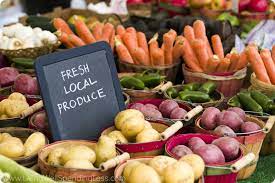Australia’s cost of living crisis continues to challenge households well into 2024. With skyrocketing electricity bills, rising fuel costs, and escalating grocery expenses, managing your budget has never been more crucial. In this guide, we’ll explore practical ways to save money in Australia, focusing on essentials like electricity, fuel, and groceries. By applying these money-saving tips, you can reduce the cost of living crisis with confidence and resilience.
Clever hacks to save on power costs in Australia

Electricity expenses can be a significant burden, but there are effective ways to save money on your power bills. Explore these top strategies to reduce costs and optimise your electricity plan across Australia.
New South Wales
In NSW, the Energy NSW website offers valuable tools for cutting electricity costs and enhancing home energy efficiency. If you’re a Family Tax Benefit recipient, you might qualify for a Family Energy rebate of up to $180 for the 2023-2024 financial year. Additionally, there’s a potential one-off energy bill relief payment of up to $500.
For more details on these and other rebates, visit Energy NSW.
Queensland
Queenslanders can take advantage of the ‘Energy Saver’ initiative, which provides resources and tips to help save on electricity bills. Eligible households might receive up to $700 through the Cost of Living Rebate, with an additional $372 if they qualify for the Queensland electricity rebate. Other households can benefit from a $550 rebate.
Check out Energy Saver QLD for more information on energy-efficient appliances and solar power incentives.
Victoria
In Victoria, the Victorian Energy Compare website enables customers to compare electricity plans from different providers and find the most cost-effective option for their household. Enter your details to get personalised recommendations that fit your energy needs. Start saving on your electricity bill by visiting Victorian Energy Compare.
Electricity is a necessity, but it doesn’t have to be a financial burden. By exploring these resources and optimising your electricity plan, you can lower your energy costs and free up more money for other essentials.
Fuel your savings: top tips to cut down on petrol costs

With fluctuating petrol prices, finding the best deal at the pump can make a significant difference in your budget. Fortunately, there are convenient tools available to help you track petrol prices and locate the cheapest options in your area. Whether you’re in NSW, QLD, or VIC, utilising a free petrol app can lead to substantial savings over time.
The FuelCheck app, available in New South Wales, and the FuelWatch app, available in Queensland and Western Australia, provide real-time information on petrol prices at various stations. Victorians can use an RACV app called Arevo. By using these apps, you can compare prices and identify the most cost-effective places to refuel.
Download the FuelCheck app for NSW, the PetrolSpy app for QLD, and for Victorians, the Arevo app.
How to shop smarter & save on your weekly groceries

Grocery shopping is a necessity, but it doesn’t have to break the bank. By adopting savvy shopping habits and making strategic choices, you can significantly reduce your grocery bill without sacrificing quality or nutrition.
Here are five of the best ways to save money on groceries in Australia:
1. Master meal planning

Start by creating a weekly menu and shopping list to avoid impulse buys and waste. Inventory your fridge and freezer to base your meals on what you already have.
Use meal planner apps or templates to stay organised and minimise the temptation of expensive takeout. By planning ahead, you’ll make more intentional purchases and stretch your food budget further.
2. Batch cook ahead of time

Dedicate a few hours on weekends to batch-cook meals. This saves time and money during the week. Prepare versatile dishes like Bolognese sauce that can be used in various meals such as pasta, tacos, or rice bowls. Check out Recipe Tin Eats for great batch cooking ideas.
3. Buy fruits and veggies in season

Purchase fruits, vegetables, and other produce that are in season, as they are often cheaper and more abundant. Visit local farmers’ markets or look for seasonal specials at supermarkets to score great deals on fresh, seasonal ingredients.
4. Switch supermarkets to find the best deals

Compare prices at different supermarkets and consider switching to stores that offer better value for money. Look out for loyalty programs, discounts, and specials that can help you save on your grocery bill each week.
5. Leave the kids at home

If possible, shop without kids to avoid distractions and impulse purchases. Supermarkets often place tempting items at checkout to increase spontaneous buys, so being mindful can help you stick to your budget.
Tips for reducing your phone bill

Saving money on your phone plan is another way to significantly reduce your spending during Australia’s cost of living crisis.
1. Assess your usage and choose the right plan
Start by evaluating your actual phone usage to find a plan that closely matches your needs. Many people end up paying for more data or minutes than they use. According to the ACCC, the average consumer uses around 15GB of data per month. By selecting a plan that fits your usage patterns, you can avoid overpaying.
2. Explore pre-paid plans and family packages
Consider switching to pre-paid plans or family packages, which often offer lower rates and better control over your expenses. These options can provide significant savings compared to traditional post-paid plans. Additionally, look for carrier promotions and special deals that can further reduce your phone bill.
3. Negotiate with your provider and seek loyalty programs
Don’t hesitate to negotiate with your current phone provider for better rates. Providers may offer discounts or loyalty programs that can lower your monthly costs. Staying informed about available promotions and exploring different carriers can also help you find the best deal for your needs.
Track your spending to maximise your budget

Monitoring your monthly cash flow is crucial for financial stability. By tracking your income and expenses, you get a clear picture of where your money is going, which helps in saving money in Australia. This insight allows you to make informed decisions about your spending and prioritise your financial goals effectively.
1. Utilise budgeting apps for automated tracking
Budgeting apps are a powerful tool for managing your finances. These apps sync with your bank accounts and credit cards, automatically categorising your transactions and offering visual representations of your spending patterns. By using a budgeting app, you can easily monitor your cash flow and identify trends, making it simpler to stick to your budget and find areas where you can save.
2. Manually review your financial statements
For those who prefer a hands-on approach, manually reviewing your financial statements is an effective method to track spending. Regularly examining your credit card statements and bank accounts allows for a detailed analysis of your expenses. This practice helps you identify unnecessary spending and make adjustments to cut back and save more.
3. Plan for the future with regular cash flow assessments
Regularly assessing your cash flow not only aids in day-to-day financial management but also helps in planning for future goals. Understanding your spending habits and income sources allows you to create a realistic budget that aligns with your financial objectives.
Whether you’re building an emergency fund, saving for a major purchase, or investing for retirement, consistent tracking provides the foundation for achieving long-term financial success.
How loans can help during Australia’s cost of living crisis
By applying for a loan, you can access the funds you need to cover essential costs without dipping into your savings or stretching your budget too thin.
In Australia’s cost of living crisis, a personal loan can provide immediate relief for urgent expenses, such as emergency medical bills or home repairs. Unlike credit cards with high-interest rates, personal loans often offer lower rates and fixed terms, making it easier to manage and plan repayments.
Make sure to compare loan options and choose one that aligns with your financial situation. Look for loans with competitive rates, manageable repayment terms, and no hidden fees. By doing so, you can navigate the cost of living crisis with greater ease.
Finding effective ways to save during Australia’s cost of living crisis will look different for every household but by implementing these strategies, you can better manage your expenses and build financial resilience. Remember, small changes can add up, and making informed decisions will help you weather the cost of living crisis with confidence.

